
Want A Thriving Cottage Garden? Learn How to Create One You Can Be Proud Of
Published: 11/10/2022 | Updated: 29/03/2023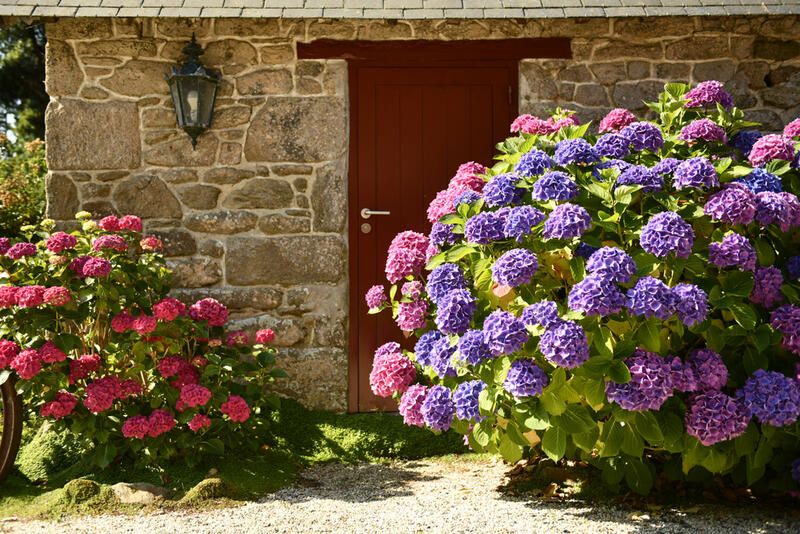
Create an otherworldly, romantic outdoor space with a dreamy cottage garden landscape.


Far from the straight lines and formal structure of modern gardening, the cottage garden style is a distinctive aesthetic that is steeped in tradition, freedom, and wildness.
The utilization of colorful flowering plants, both edible and ornamental, as well as local, traditional materials results in the creation of an untamed landscape that is very low-maintenance.
And the ultimate result is a fairy tale-like garden that evokes a whimsical and charming atmosphere.
And today, we've gathered some of our best cottage garden ideas to help you get creative and build that dreamlike, informal design full of lovely thick planting.
Table of Contents
What Is the Difference Between an English Garden and A Cottage Garden?
What Are the Characteristics of a Traditional Cottage Garden Design?
#3: Antique & Vintage Decorations
#7: Traditional Cottage Garden Plants
Ready To Create Your Dreamy Cottage Garden?
What Are Cottage Gardens?
Cottage gardens date back to the Middle Ages when they were first used as a practical, useful source of food and medicine by poor peasant cottagers who were living below the poverty line.
Herbs were grown for culinary and medicinal uses, and fragrant flowers and herbs were scattered across the garden space to serve as scent shields and cover offensive odors.
What Is The Difference Between An English Garden And A Cottage Garden?
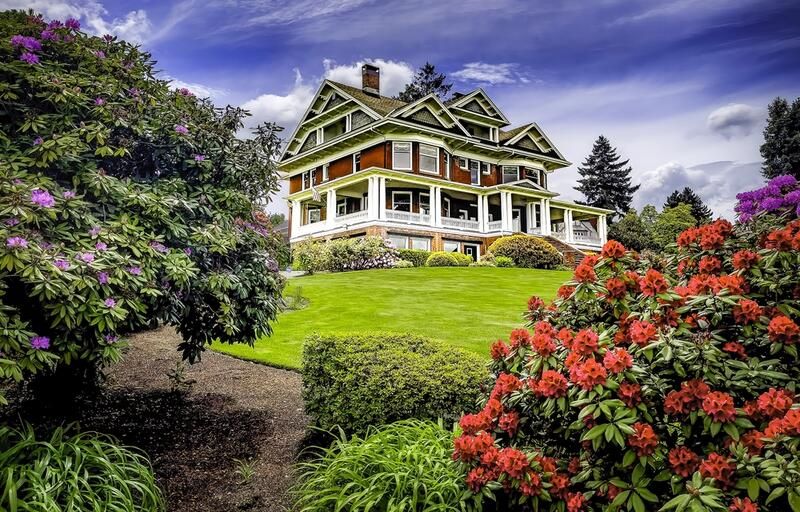
The main difference comes down to space.
Most cottage gardens are mainly associated with small outdoor spaces that incorporate affordable landscape elements.
English gardens, on the other hand, are formal gardens that depend on having a large outdoor space where sophisticated and extravagant design elements are utilized to imitate the natural atmosphere of a cottage garden but on a greater and more formal scale.
And historically speaking, the English garden has been largely linked to affluent noble estates with ample outdoor space.
What Are The Characteristics of A Traditional Cottage Garden Design?
Giving your cottage garden a natural feel is crucial, as is the inclusion of a variety of native plants that you would often find in natural environments.
Hardscape additions such as trellises and arbors are staple features of cottage gardens where they are used to define the landscape and allow plants such as flower climbers to display their stunning colors throughout the changing seasons.
Reading this, you might think that the cottage garden style is somewhat similar to the farmhouse design style. And you wouldn’t be wrong.
In fact, a lot of the elements employed in the traditional cottage garden design can also be found in the farmhouse style.
If you would like to learn more about the farmhouse style, check out our blog on farmhouse landscape design.
Otherwise, read on to find out our favorite elements of cottage-style garden design.
#1: Stay Wild!
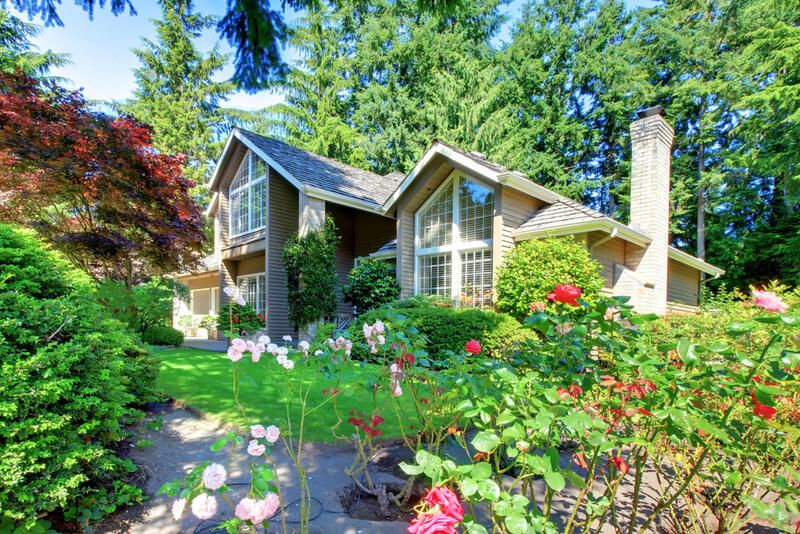
When it comes to cottage gardens, there are no rules to follow. In fact, breaking the formal rules of landscaping might just be the only rule.
When creating your cottage garden, it is all about maintaining a wild and free mindset. So, forget structure or maintain a meticulously planned garden space.
In fact, cottage gardens have one essential characteristic, and that is to create an unruly and informal landscape that appears naturally developed. A wild garden, however, is sometimes difficult to achieve on purpose in the absence of a proper landscape design.
#2: Rustic Furniture
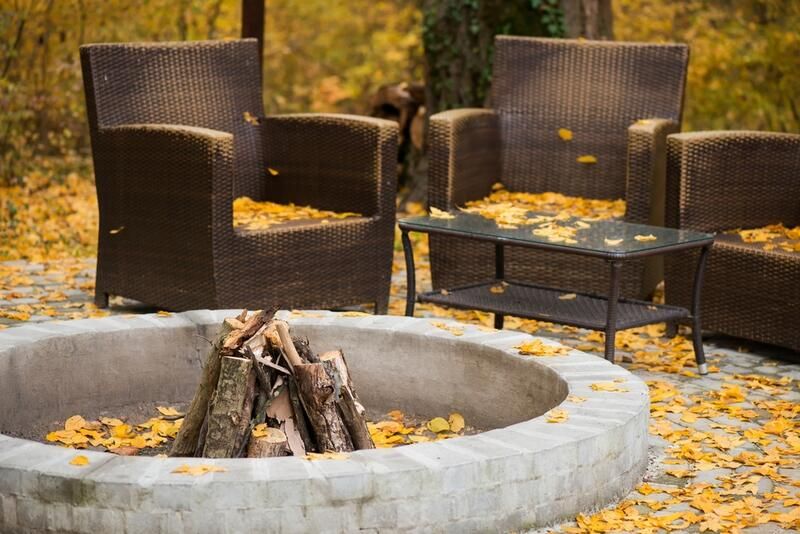
For your outdoor seating space, furniture made out of reclaimed or weathered wood is an essential step toward that relaxed garden ambiance.
The rustic furniture will add a picturesque quality to the overall design and create a comfortable and easy-going atmosphere.
And don’t be afraid to mix and match your furniture; such eccentricities add even more charm to your seating area.
#3: Antique & Vintage Decorations
Use antique and vintage decorations to add more beauty to the rustic atmosphere.
Things like antique garden statues as well as vintage urns and birdbaths can be so enchanting and are sure to increase the magical beauty of your cottage garden.
Flea markets and yard sales are great places to hunt for such rare and charming decorations.
Also, make sure to look for things like metal pots, windchimes, wrought iron flower baskets, and rustic lamps.
A vintage-looking handmade cottage name sign at your front gate will also make for a great welcoming display.
#4: Water Features
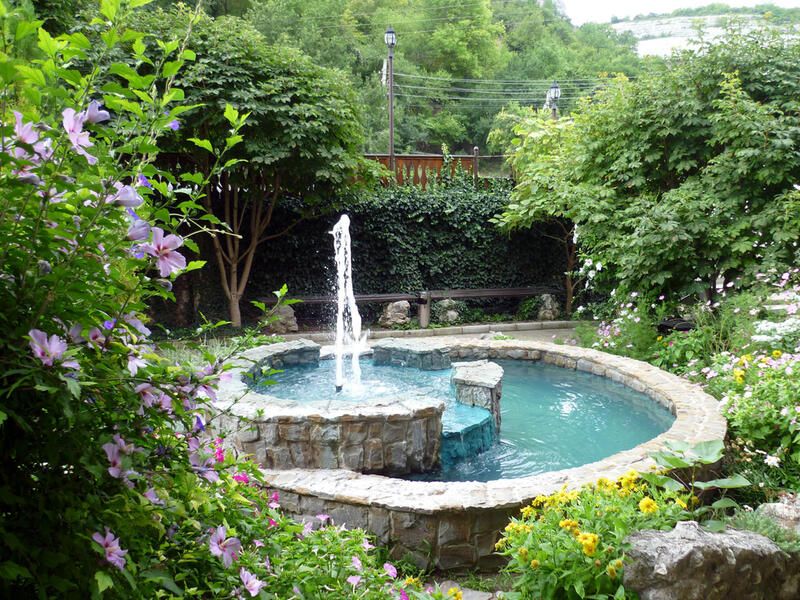
By making use of the natural stone found in the surrounding environment, you can create a cascading waterfall or a river that flows through your backyard to irrigate the garden.
The installation of a simple, non-ornamental water pond with a vintage hand pump would also be a wonderful enhancement to the country garden theme.
#5: Fencing
For the boundaries used to edge your property’s front yard, low fencing is key.
Use materials such as reclaimed or weathered wood for your picket fence.
Or utilize natural stones from the local environment to build charismatic and enchanting dry-stone walls. And allow your hanging fruit plants and climbers to beautifully adorn your walls and brighten them up.
Blackthorn or hawthorn hedging is also a great choice for a stock-proof boundary that is sure to keep the animals out of your garden.
And of course, don’t forget to include a rustic-looking gate on the walkway leading up to your front door.
#6: Stone Pathways
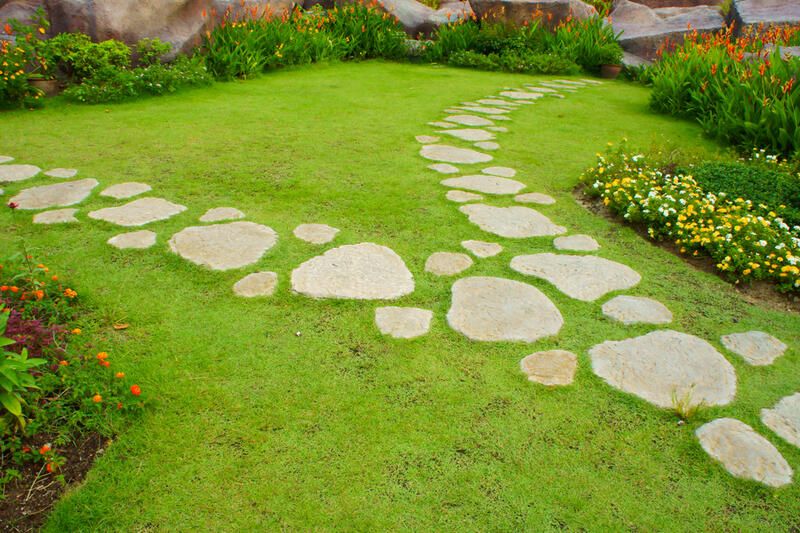
Building pathways in cottage gardens from stone, gravel, or any other natural material is a terrific way to add contrast to the surrounding lush vegetation.
Keep the pathway leading to your front door practical by making it straight and direct.
On the other hand, edge the pathway with plants that sprawl freely and flop over the side.
For the main pathway, use materials such as salvaged bricks and arrange them in a herringbone pattern, or go for local stones such as cobbles or flint.
Then, you can construct gentle, curved pathways to guide you to the various plants in your garden that may require your attention.
Natural materials like gravel, hoggin, or bark mulch (wood chips) can be used to create these informal, well-trodden paths.
#7: Traditional Cottage Garden Plants
As cottage gardens are characteristic of being small in space, things like lawns and picnic areas are impractical and completely disposed of.
The focus is on taking advantage of every square inch in the garden, filling it with useful, low-maintenance plants that would benefit the household while also reducing weeding and pruning requirements while ultimately offering a relaxing and beautiful visage.
Self-seeders are a staple in cottage gardens as they will naturally fill up any gaps or empty spaces in the soil with new plants, thus maintaining the dense plantings without any intervention from humans.
Still, the plants in cottage gardens remain a harmonious mix of both practical and ornamental. And fragrant plants with strong scents are always at the top of the selection list.
Romantic and Poetic Flowers:
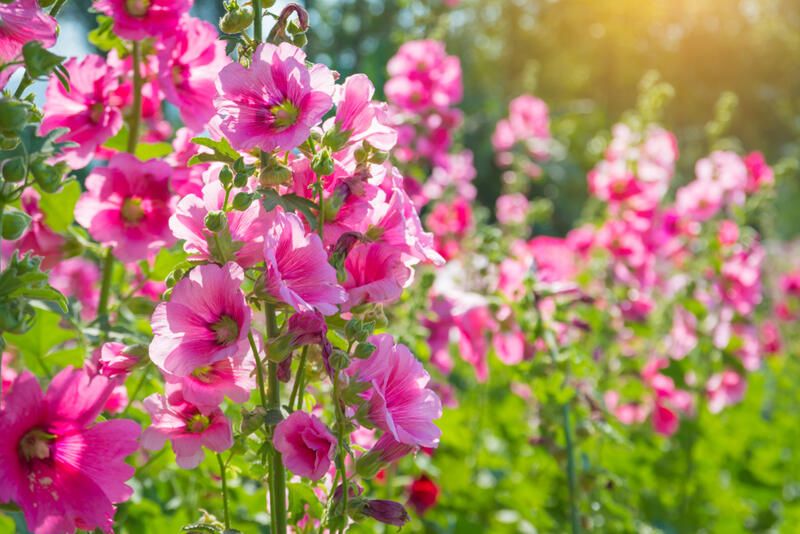
Romantic flowers are a typical cottage garden feature, and that is due to cottage gardens' reputation being mostly associated with exuding a romantic atmosphere.
And the flowers contribute greatly to that aesthetic.
Look for local flowers with delicate, soft petals and ethereal pastel hues like pink and purple flowers.
Flowers with bountiful petals such as old roses, peonies, marigolds, hollyhocks, geraniums, daisies, foxgloves, hollyhocks, and geraniums are great choices for a stunning variety of vibrant blossoms to add to your garden beds.
Edible Plants:
A variety of edible perennials and self-sowing annuals that offer year-round interest are grown to keep the house self-sufficient.
Fruits & Vegetables:
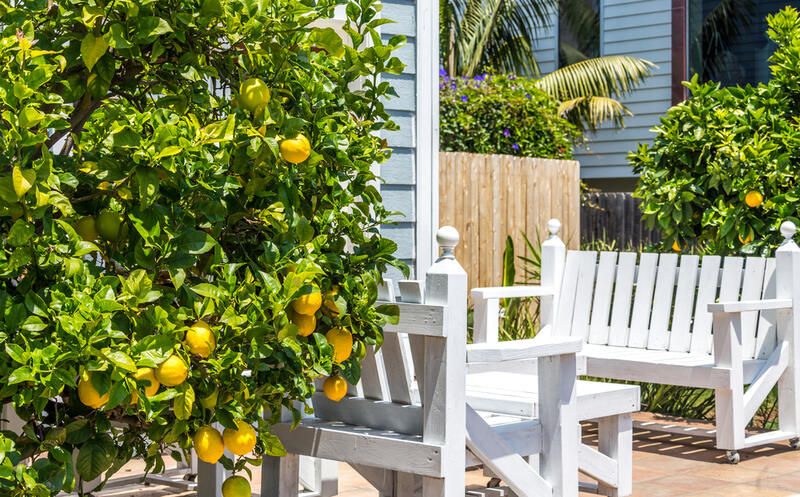
For vegetables, plants such as kale, carrots, cabbages, leeks, and onions are prominent. As for fruits, fruit trees are always considered great additions to any cottage garden.
An apple tree belonging to a heritage variety such as Malus Domestica (Ribston Pippin) offers both delicious apples as well as a fantastic aesthetic that is befitting of an authentic cottage garden.
Plum trees and strawberries are also popular choices.
Herbs:
The cottage garden herbs are planted for their stunning visuals, strong fragrance, and edible value. Plant plenty of scented herbs such as sage, rosemary, thyme, lavender, parsley, and mint.
Groundcovers:
Since sprawling lawns are impractical, groundcovers are used as their replacement. Plants such as dianthus, bugleweed, shrub roses, candytuft, and creeping phlox as well as other flowering shrubs are great selections for your cottage garden.
Climbing Plants:

Although modern cottage gardens don’t offer ample space for picnics or such, seating areas can still be created for you to sit back and relax while surrounded by that gorgeous garden view.
Such seating areas are usually created under beautiful trellis or arbors that are wrapped with amazingly scented climbing roses.
Climbers can also be used to decorate the trunks of fruit trees, cottage walls, or even the front door frame.
Ready To Create Your Dreamy Cottage Garden?
A cottage garden is the quintessential English garden.
Basically, a cottage garden is a purposefully messy garden design that enables you to make the most of your available outdoor area.
A carefree and romantic environment is created by this absence of formal structure, where plants are allowed to flourish and spread freely, creating a pleasant and poetic ambiance.
The benefits of having your own cottage garden are numerous.
Cottage gardening, for instance, costs a lot less than its more ornate and sophisticated counterparts.
This is because it seamlessly blends beauty and function into a breathtakingly beautiful spectacle where edible plants, including vegetables, fruits, and herbs, are mixed with a vast array of attractive and strongly perfumed blossoms.
Additionally, cottage gardens require very minimal maintenance to develop and thrive beautifully.
And with ShrubHub’s professional team of landscape designers, you can transform your yard into your ideal outdoor space.
And with a little bit of time and a lot of self-control (you must resist the impulse to prune), you can create your very own, perfectly spontaneous dream cottage garden.
For just under $300, our customers will receive ShrubHub’s comprehensive package of professional design services.
All you need to do is sign up on our website, shrubhub.com. And for a limited time, you will get a 70% promo discount on all our design services.
Don’t miss out! Visit our website today and get started on landscaping your dream garden.
***
ShrubHub is a network consisting of the best landscape designers in the industry, using the latest state-of-the-art software to deliver high-quality, unique, and creative designs. We work from home, so we have no overhead. And that is how we are able to offer our top-tier design services at such an affordable price.


